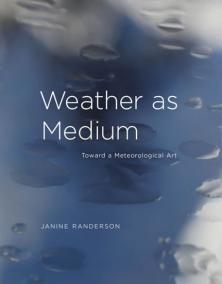Weather as Medium : Toward a Meteorological Art
Dátum vydania: 30.10.2018
An exploration of artworks that use weather or atmosphere as the primary medium, creating new coalitions of collective engagement with the climate crisis.
In a time of climate crisis, a growing number of artists use weather or atmosphere as an artistic medium, collaborating with scientists, local communities, and climate activists. Their work mediates ...
Detaily o knihe
Počet strán: 273
Rozmer: 185x236x24 mm
Hmotnosť: 743 g
Jazyk: Anglicky
EAN: 9780262038270
Rok vydania: 2018
Žáner: Angličtina - beletrie
Zákazníci, ktorí si kúpili túto knihu, si kúpili aj...
O knihe
An exploration of artworks that use weather or atmosphere as the primary medium, creating new coalitions of collective engagement with the climate crisis.
In a time of climate crisis, a growing number of artists use weather or atmosphere as an artistic medium, collaborating with scientists, local communities, and climate activists. Their work mediates scientific modes of knowing and experiential knowledge of weather, probing collective anxieties and raising urgent ecological questions, oscillating between the -big picture systems view- and a ground-based perspective. In this book, Janine Randerson explores a series of meteorological art projects from the 1960s to the present that draw on sources ranging from dynamic, technological, and physical systems to indigenous cosmology.
Randerson finds a precursor to today's meteorological art in 1960s artworks that were weather-driven and infused with the new sciences of chaos and indeterminacy, and she examines work from this period by artists including Hans Haacke, Fujiko Nakaya, and Aotearoa-New Zealand kinetic sculptor Len Lye. She looks at live experiences of weather in art, in particular Fluxus performance and contemporary art that makes use of meteorological data streams and software. She describes the use of meteorological instruments, including remote satellite sensors, to create affective atmospheres; online projects and participatory performances that create a new form of -social meteorology-; works that respond directly to climate change, many from the Global South; artist-activists who engage with the earth's diminishing cryosphere; and a speculative art in the form of quasi-scientific experiments. Art's current eddies of activity around the weather, Randerson writes, perturb the scientific hold on facts and offer questions of value in their place.













